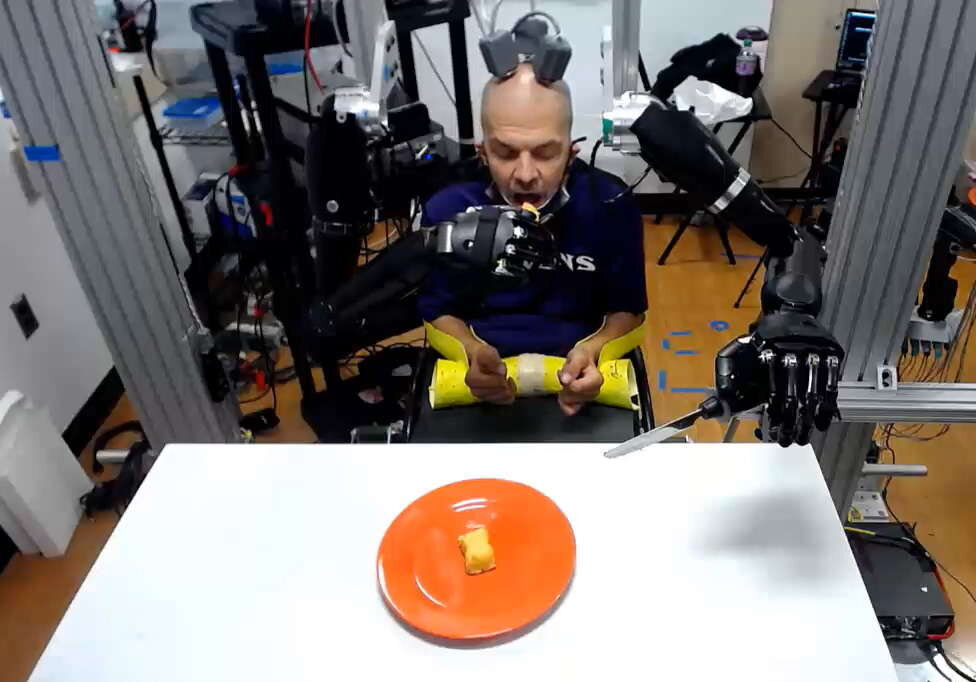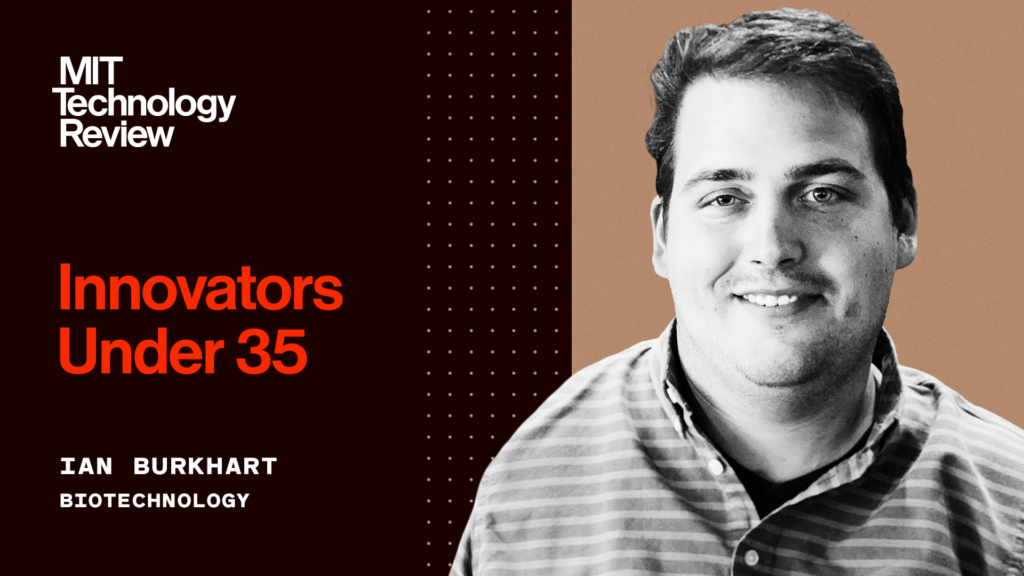By Adam Pockross
While many a Twinkie eater probably doesn’t spend all that much time savoring their tasty treat, that’s not the case for Robert “Buz” Chmielewski, a quadriplegic for the last 30 years, who just fed himself one of Hostess’ time-honored (and time-defying) yellow cake creations. And you can imagine he savored every morsel of the meal he manipulated his own brain waves and two advanced prosthetic arms to eat.
Yeah, that’s right — we’ve mastered Twinkie tech.
While we’d normally be unsettled by the sight of robot arms clinging to knives, in this case, it’s a testament to the wonders of science. Robotics, in conjunction with AI and a brain-machine interface, combined to give Chmielewski –– who has had limited feeling in his hands and fingers since a childhood accident –– the agency to perform such an everyday task, which for him is anything but ordinary.
As documented in the video below, last month, Chmielewski mentally powered two modular prosthetic limbs created by the smarties at Johns Hopkins University’s Applied Physics Laboratory, to perform simultaneous bimanual manipulation of a Twinkie. In other words, he used a fork and a knife to cut pieces of the cake and feed himself. Have Robot Arms, Will Eat Twinkie
“It’s pretty cool,” Chmielewski said after his historic meal, via JHU’s press release. “I wanted to be able to do more of it.”
Chmielewski’s accomplishment is considered a “big step toward restoring function and autonomy” for people who have lost partial or total use of their limbs and torso. But it didn’t happen overnight. Nearly two years ago, as part of a clinical trial originally funded by DARPA, surgeons at the Johns Hopkins Hospital in Baltimore performed a 10-hour brain surgery, implanting six electrode arrays into both sides of Chmielewski’s brain with the hope of allowing “participants to control assistive devices, and enable perception of physical stimuli (touching the limbs) using neurosignals from the brain”.
Thanks to that surgery and APL’s brain-machine interface, within months, he was able to show simultaneous control of the prosthetic limbs. So the team decided to pursue a parallel line of inquiry, dubbed “Smart Prosthetics,” hoping to utilize neural stimulation while advancing robotic control and sensory feedback from both hands. The end goal is for quadripelegic patients to be able to perform such tasks as second nature.
“Our ultimate goal is to make activities such as eating easy to accomplish, having the robot do one part of the work and leaving the user, in this case, Buz, in charge of the details: which food to eat, where to cut, how big the cut piece should be,” said David Handelman, an APL senior roboticist. “By combining brain-computer interface signals with robotics and artificial intelligence, we allow the human to focus on the parts of the task that matter most.”
“A lot of people take that for granted,” Chmielewski said. “To be able to do this independently and still be able to interact with family is a game-changer.”



